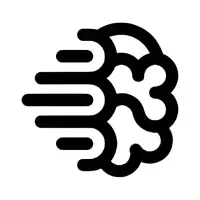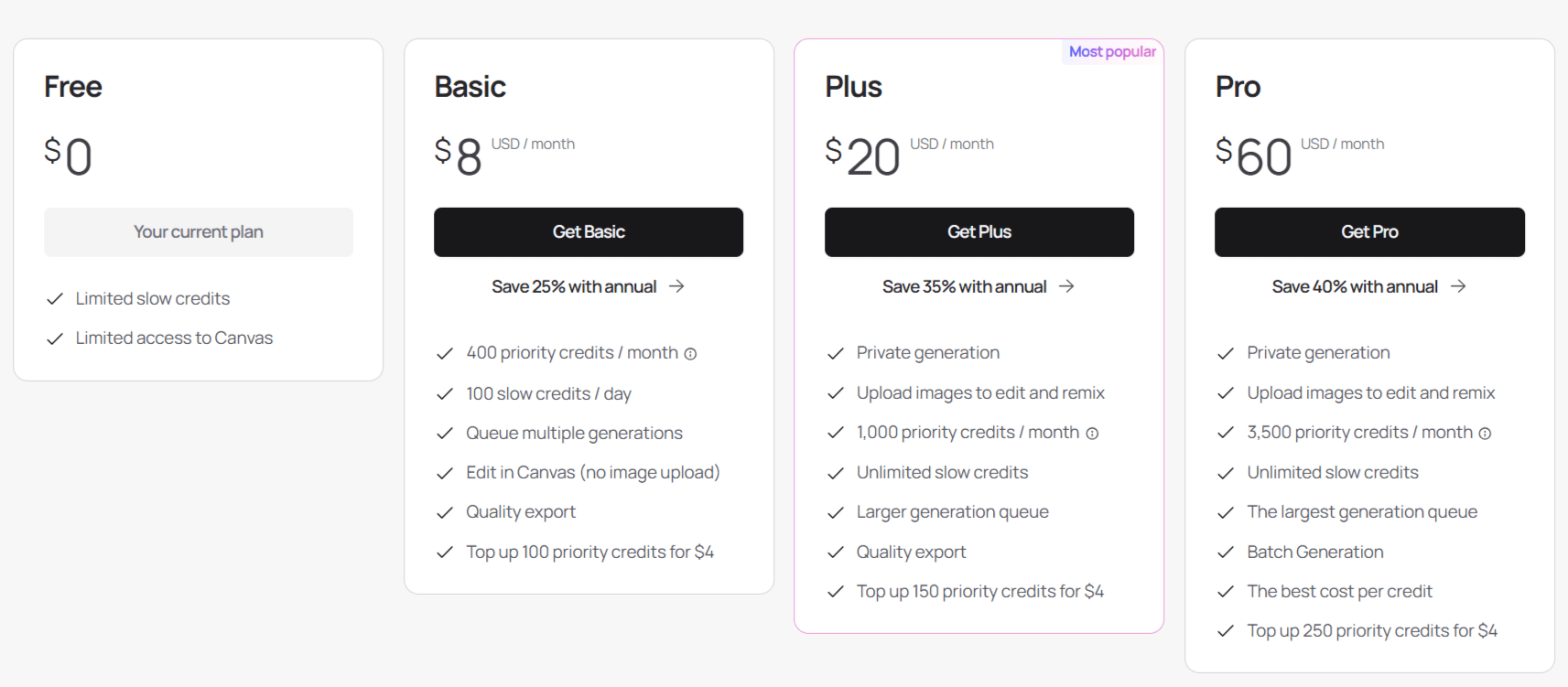Ideogram AI

Introducing Ideogram AI 3.0
The latest and most advanced Ideogram model was released on March 26, 2025. It brings a noticeable leap in quality, realism, and control with key improvements:
Higher Visual Fidelity: Images feature more natural lighting, smoother gradients, and better rendering of textures.
Improved Text Rendering: Ideogram's core strength got even better, producing crisp, legible text that fits naturally into designs.
Style Reference Support: You can now upload a reference image to guide the aesthetic of your generation, allowing for greater creative consistency.
Refined Compositions: The Ideogram AI model better understands spatial relationships, layering, and depth, leading to more balanced and coherent images, especially in complex scenes.
Key Features of Ideogram AI
Ideogram AI is packed with features to help you generate and refine images:
Text-to-Image Generation: At its core, it effortlessly transforms text prompts into high-quality, visually stunning images.
Typography: Its signature feature allows for the creation of stylized and accurate text within images.
Magic Prompt: This Ideogram AI App feature transforms a brief, simple idea into a rich, detailed prompt, helping you achieve striking visuals. It's generally recommended to keep it on for better results.
Aspect Ratios & Resolutions: You can easily select from various preset aspect ratios (like 1:1, 2:1, 1:2, 3:2, 4:3, 16:9) or define custom ones, which is a nice touch compared to some other tools. The aspect ratio can significantly influence the framing of your image.
Color Palette: Helps ensure your generated images align with your branding. Custom options are available for Plus, Pro, and Team plans.
Negative Prompt: Allows you to specify elements you don't want to appear in your image, giving you more control.
Style Designation: You can select specific styles you're aiming for with little buttons, such as Realistic, 3D, Anime, Design, or General. An Auto style option is also available.
Remixing: If you generate images and find one you like, you can "remix" it. This creates subtly different versions of the image, and you can even bump up the image weight or add new elements to the prompt during remixing.
Visibility Control: You have the option to make your generated images public or private.
Sharing Images: There's functionality to share your creations.
Batch Generation: A powerful feature for Pro and Team plan users, allowing you to generate images from up to 500 prompts at once using a CSV file.
Describe: This Ideogram App feature can analyze an image and generate a text prompt that describes it. It costs 1 priority credit for free users but is free for all paid subscribers.
Upscale: Improves the resolution of your generated images.
Canvas & Editing Tools: Ideogram offers a canvas interface with tools like Extend (out-painting to expand the image), Magic Fill (in-painting to fill in parts of an image), and a Text tool. Paid plans offer unlimited canvases.
Background Control: You can remove or replace backgrounds from your images to isolate subjects or create new scenes.
Render Speed: You can choose from Turbo, Default, or Quality settings, which determine how much time the AI dedicates to generating the image, affecting the level of detail.
API Access (Beta): For those who want to integrate Ideogram's capabilities into their own workflows or applications.

Common Use Cases
Ideogram AI is incredibly versatile and can be used for a wide range of creative and business applications:
Creating Logos: It's super helpful for quickly generating logos for new business ideas or projects, making them feel more real.
Promotional Graphics: You can create unique graphics for various promotions and offers, like a summer camp advertisement.
Social Media Content: Easily generate eye-catching headers for articles, blog posts, or other long-form content, as well as general social media graphics.
Podcast Covers: Design awesome covers for your podcasts.
Email Newsletters: Quickly create simple yet effective visuals to drop into email newsletters.
T-Shirt Designs: Generate humorous or creative designs for t-shirts, which can even lead to passive income opportunities.
Event Signage: Create exciting banners and signage for personal or organizational events.
Custom Cards: Design hilarious and personalized cards for family or teammates for birthdays or work anniversaries.
Ideogram AI Pricing and Credit System
Ideogram operates on a credit system, with various plans to suit different needs:
1. Free
The Free plan offers basic features and 10 slow credits per week (up to 40 images/week), which reset every Saturday UTC. You can generate 1 set of 4 images concurrently.
2. Basic
It’s $8 per month (or $6/month annually). It includes 400 priority credits per month (up to 3,200 images/month) and 100 slow credits per day (up to 800 images/day). It allows for 2 concurrent generations.
3. Plus
The Plus plan is $20 per month (or $13/month annually). Provides 1,000 priority credits per month (up to 8,000 images/month) and unlimited slow credits. You can run 8 concurrent generations.
4. Pro
Costs $60 per month (or $36/month annually). Offers a generous 3,500 priority credits per month (up to 28,000 images/month) and unlimited slow credits. You can run 32 concurrent generations.
5. Team
Designed for teams, starting at $30 per month per member (minimum 2 members, or $25/month/member annually). Each member gets 1,500 priority credits per month (up to 12,000 images/month) and unlimited slow credits. Each member can also run 32 concurrent generations.

Understanding the Credit System
Priority Credits: Generations made with priority credits are processed with minimal to no wait times. Certain advanced tools like Batch Generation, exclusively use priority credits. Monthly priority credits expire at the end of each billing cycle, but any priority credits purchased as a top-up will roll over to the next month.
Slow Credits: Generations using slow credits might experience wait times of up to 7 minutes, depending on server capacity and your recent usage.
Credit Costs per 4 Images:
Ideogram 3.0: 2 credits (Turbo), 4 credits (Default), 6 credits (Quality).
Ideogram 2a: 0.5 credits (Turbo), 1 credit (Default), 1.5 credits (Quality).
Ideogram 2.0: 1 credit (Turbo), 2 credits (Default), 3 credits (Quality).
Ideogram 1.0: 1 credit (Turbo).
Upscale (1.0): Costs 1 credit per image.
The Describe feature costs 1 priority credit for free users, but it's free for all paid subscriptions.
Priority Credit Top-Ups: If you run out of your monthly priority credits, you can purchase more at $4 per 100 credits, up to a maximum of 1,000 credits per transaction. These purchased credits will roll over month-to-month until used. The usage order is: Monthly Priority credits > Top-up Priority credits > Slow credits.
Pros
Exceptional Text Rendering: Its biggest differentiating factor is its unparalleled ability to generate crisp, legible, and highly stylized text within images.
User-Friendly Interface: Designed for ease of use, making it accessible even for beginners without prior technical expertise.
Simplifies Creative Workflows: Automates image creation, significantly saving time and effort for users.
Supports Multiple Artistic Styles: Adapts to various artistic preferences and project needs, offering flexibility.
Free Tier Available: Offers basic features for free, making it accessible for casual users or those wanting to try it out.
No Restrictions on User Output: Ideogram does not restrict your rights in the images you generate, even for commercial purposes.
Cons
Customization Limitations: While offering good customization, it may not provide extensive fine-tuning options for users with extremely specific visual requirements.
Interface Complexity (subjective): Some users might find its interface more complex than Midjourney's, though it offers more features.
Model Performance Variation: The newest model (3.0) isn't always superior in every single test category compared to its predecessors, and might occasionally deviate from subtle prompt details.
Tips for Effective Prompting
To get the best results from Ideogram AI, it's crucial to craft clear and precise prompts. Here are some common pitfalls and how to fix them:
Vague Adjectives
Avoid non-specific words like "beautiful," "interesting," or "cool," as the AI lacks a clear visual reference for them.
Fix: Replace them with specific visual details. For example, instead of "A beautiful forest," try "A dense forest with tall pine trees and soft rays of sunlight filtering through the branches".
Generic Style Terms
Broad style descriptors like "artistic" or "modern" don't provide enough guidance.
Fix: Specify the desired style using well-known art movements, techniques, or mediums. Instead of "a modern painting of a landscape," try "An impressionist painting of a rolling countryside with thick brushstrokes and pastel tones".
Contradictory Descriptions
Conflicting information in a prompt can confuse the AI.
Fix: Ensure all elements of the prompt are coherent and compatible. For example, avoid "A minimalist sculpture with fine and intricate details." Instead, use "A minimalist sculpture with smooth, simple geometric shapes in white marble" OR "A detailed sculpture carved with delicate patterns and ornamental features".
Abstract Concepts Tied to a Subject
Prompts focusing on abstract ideas without concrete visual elements can lead to varied results.
Fix: Anchor abstract concepts with tangible visuals. Instead of "A symbol of hope," try "A single flower blooming through a crack in the concrete".
Aspect Ratio Influence on Framing
The chosen aspect ratio significantly influences how the AI frames your subject.
Fix: Choose an aspect ratio that matches your intent (e.g., portrait for full-body, landscape for wider views) and include clear framing cues in your prompt, such as "full-body," "head and shoulders," or "wide establishing shot". You can also include visual elements that hint at how much of the subject should be shown (e.g., describe shoes for a full-body shot, or focus only on upper-body features for close-ups) or adjust the focus of the prompt (describe the environment for wider framing, or keep the person as the main subject for tighter framing).
Learning to spot and fix these small issues can significantly improve your results and help the AI understand your vision better.
Frequently Asked Questions
These are answers to some questions about Ideogram AI:
How to earn from Ideogram AI?
You can earn by creating designs for print-on-demand products like t-shirts and pillows, then selling them on platforms like Amazon through services such as Printful or Printify. Ideogram also has an Affiliate Program for content creators who refer new paid subscribers.
Can I sell Ideogram AI images?
Yes, you can sell images you create with Ideogram AI. The platform does not restrict your rights to use your generated content for your own purposes, including commercial ones.
How do I access Ideogram AI?
You can easily access Ideogram AI through its website, ideogram.ai. There's also an official iOS app available for iPhones and iPads. You'll need to sign up for an account to start generating images.
Is Ideogram AI safe to use?
Ideogram AI is safe, with strong privacy measures and detailed Terms of Service. They have rules against objectionable content and unauthorized use, and clarify that users are responsible for their content.
Does Ideogram AI have an app?
Yes, Ideogram AI is available as an official iOS app for iPhone and iPad users. This allows you to create stunning images directly from your mobile device.
What model is Ideogram AI using?
Ideogram AI uses several models, including Ideogram 2.0, 2a, and their latest, Ideogram 3.0. Ideogram AI 3.0 is their most advanced model, offering improved visual quality, realism, and typography. Different models may suit different creative needs.
Can I use Ideogram.ai for print on demand?
Absolutely, you can use Ideogram.ai for print-on-demand. The tool is well-suited for creating designs for t-shirts, pillows, and other products that can be sold through print-on-demand services like Printful or Printify.

